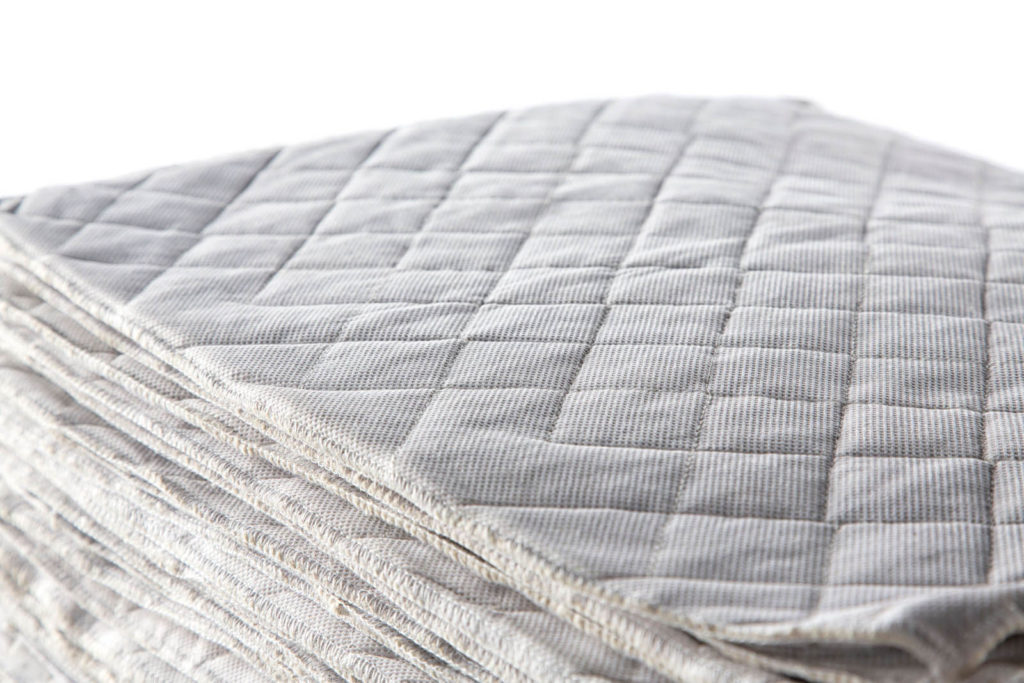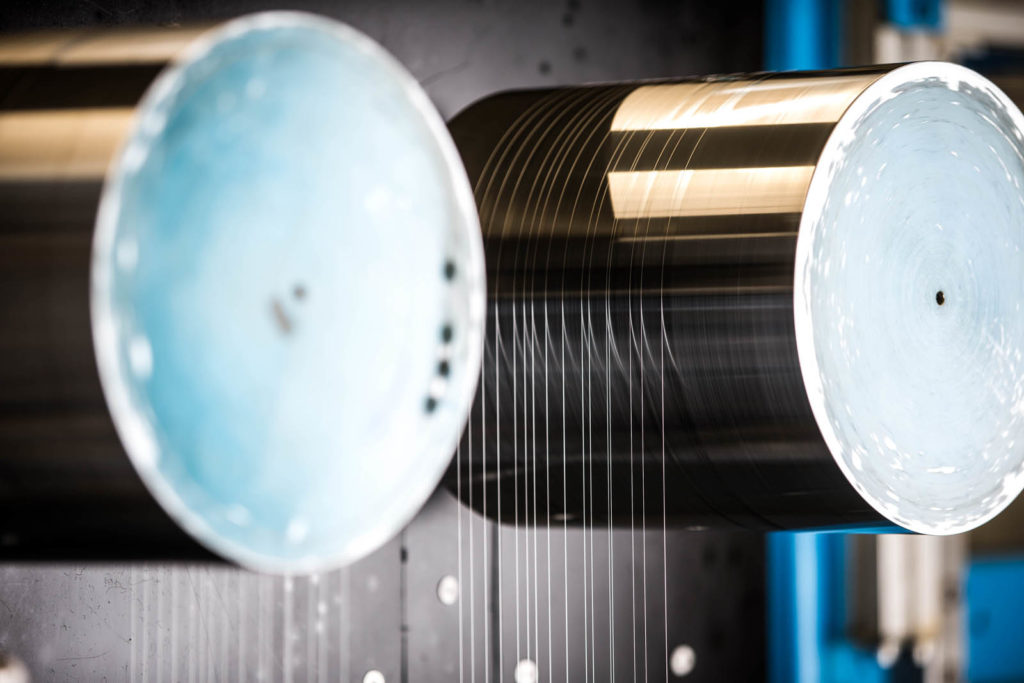Environmentally friendly materials and processes can add value to textiles.
by Seshadri Ramkumar
The textile industry and the world of sustainability have evolved in the last four decades. The need to conserve resources for future generation, which has rightly become a movement, began with an examination of greenhouse gas emissions. The labels used to refer to this important issue have evolved (“greenhouse gas emissions,” to “global warming” to the present day, “climate change”), and the textile sector has also experienced shifts, such as the migration of production from the western hemisphere to the eastern side. The growth in the development of high performance textiles has also impacted this movement.
In accordance with growing consumer need, specifically in developed economies, the next phase is the focus on cost-effective sustainable products. Future textile products will have to have certain functionalities that address environmental impact, as well. But the industry has to be aware of price points for these functional, sustainable textiles, as well.

Sustainability in the evolution of the industry
In the context of sustainability, it is a useful exercise to categorize the fiber-based products based on its evolution (from commodity to advanced), content (natural or manmade) and the nature of performance (functional versus nonfunctional). In general terms, textile products are commodities or technical textiles, which includes advanced textiles. These predominantly concentrate on providing functional properties, with less focus on aesthetic aspects, or none at all.
Sustainability adds value because of environmental concerns, as well as consumer preferences. For instance, use of cotton or other natural fibers, in addition to sustainability, provide valuable properties depending on their innate capabilities such as water vapor transport, warmth, next-to-skin friendliness, and so forth. This article endeavors to highlight a few initiatives that have successfully paired functionality with sustainable values.
Greening defense zones with textiles
The defense market sector has played an important role in developing functional textiles, such as soft and hard composites, protective textiles, antimicrobials and anti-ballistics. Interestingly, the Base Realignment and Closure (BRAC) effort is providing needed opportunities for textiles, particularly with environmental cleanup efforts, where textiles such as water filters, decontamination wipes and protective materials find ample applications.
BRAC is the congressionally authorized process the U.S. Dept. of Defense has used to reorganize its base structure to more efficiently and effectively support military forces and increase operational readiness.
The closure of Lubbock, Texas-based Reese Air Force Base in 1997 created a number of opportunities for the development of sustainable advanced textiles. The former air force base is the home for Texas Tech’s Institute of Environmental and Human Health (TIEHH). Two sustainable functional products with specific value-added applications have been commercialized out of research conducted at TIEHH.
Chantilly, Va.-based Fist Line Tech LLC, is marketing, FiberTect decontamination wipes. This patented platform technology lends itself to different types of natural fibers, synthetics and blends. The structure helps with both adsorption and absorption of phase-changing chemicals, such as sulfur mustard. It has been found valuable for soldiers and national guards.
FiberTect was developed as a non-particulate wipe to decontaminate soldiers and military equipment. By making it sustainable with natural cotton, the hydrophobic nature and its biodegradability lends itself to many industrial applications, such as toxic oil absorption. With the natural cotton component being oleophylic and hydrophobic in nature, it separates water and oil, adding a functionality without the use of any specialty chemicals.
TowelieTM is the other sustainable high-tech textile that’s used for toxic oil absorption. Lubbock-based E Innovate, LLC, is marketing the multipurpose sustainable wipe that has industrial applications. TowelieTM has been widely accepted by companies in the oil and gas, auto mechanics, manufacturing and marine industries who care about reducing their impact on the environment,” says Ronald Kendall, Jr., president of E Innovate LLC.
More generally, activated carbon-based filters are part of cleaning systems used in the remediation of contaminated ground water in the defense bases. This is necessary due to the use of chemicals, such as aircraft cleaning solvents and firefighting foams, used while the bases were active. Activated carbon in fabric form enclosed in a structure will be more desirous than loose particles. Exploiting the functionality from a structural point of reference brings more value.
Textile manufacturing processes such as needle-punching technology will be useful to achieve such functionality. Processes like these preserve, or even enhance, important high-performance capabilities such as surface area, without sacrificing innate characteristics. In the case of activated carbon fabrics, using the needle-punching process to develop a composite structure would not mask the pores, reducing its innate characteristic, which is high surface area.
Cost effective natural precursors, such as cotton stalks or bagasse, can be experimented with to develop functional materials.
Reinforcing roads using sustainable materials, including fiber blends, should be carefully considered. While initially cost may be an issue, materials such as coir, jute and hemp have certain inherent functional values that can come in handy. There is growing interest among producers in certain states to experiment with hemp because of its cost of production, resistant to adverse weather conditions and emerging possibilities in industrial applications.

Environmentally friendly processes
One of the main reasons, the textile industry shifted from the West to the East is because of environmental regulations imposed by developed nations. The textile industry’s early efforts focused on finding alternate methods that consume less water and chemicals. Prof. Fred Cook of the Georgia Institute of Technology pioneered research in this area and developed a single-step desizing, scouring and bleaching process in the 1980s. Recent efforts are focusing on foam-based finishing, supercritical fluid processes and plasma finishing.
With the advent of continuous atmospheric pressure plasma methods, it is now possible to use zero water and a smaller amount of chemicals to impart functional properties to textiles. There are now continuous wide-width plasma machines, which can be used with existing finishing machines and nonwovens machines. With increased adaptation and large-scale use of these machines, initial capital investment cost may come down; however, this is yet to happen.
Circular Economy
While the industry focuses on using environmentally friendly raw materials and “green” processing methods, it is equally important to recycle and reduce waste. The concept of a circular economy is getting greater acceptance as the textile industry consumes a considerable amount of synthetic raw materials and chemicals.
According to the Ellen MacArthur Foundation, the circular economy is built on designing out waste and pollution, keeping products in use and reusing. This subject occupied center stage at the 58Th annual International Fiber Congress in Dornbirn, Austria. Paper and regenerated fiber industries are focusing on reuse and reduce. Austria-based Lenzing, AG has developed Lyocell fibers from cotton, “REFIBRA.” Chennai, India-based WellGro United is developing clean cotton that may find many industrial applications.
Chemical and bioengineering methods are exploited by the textile and allied industries to develop green chemicals. Archroma has developed “Earthcolors,” sulfur dyes from wastes such as gin wastes and almond shells. Bioengineering principles are being examined to replicate natural coloration in plants in artificial settings, such as chemical laboratories.
With the concerns in discussion concerning climate change, sustainability is taken seriously by the industry. The three pillars of sustainability (3Es)—environmental friendliness, energy efficiency and economic viability—offer a path forward. If the 3Es are considered in product development and the research is translated to the market place, greater consumer acceptance could be achieved.
Seshadri Ramkumar, Ph.D., is the director of the Nonwovens and Advanced Materials Laboratory, Texas Tech University, and a frequent contributor to Advanced Textiles Source.
 TEXTILES.ORG
TEXTILES.ORG


